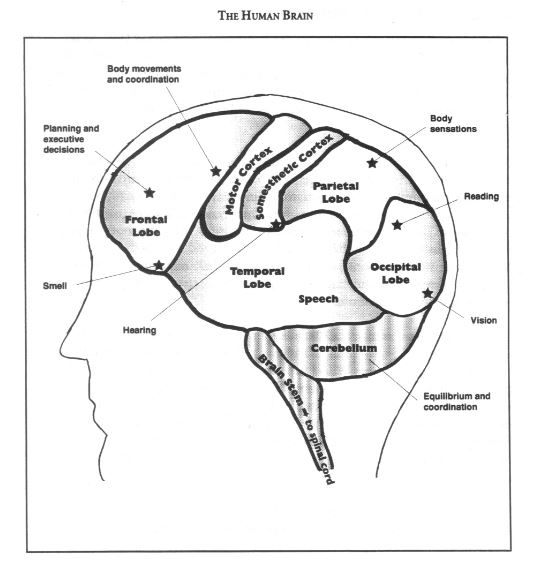Do you ever think about how we experience our world around us? How do we know a lemon is yellow and shaped like a miniature football, makes our lips pucker, and tastes great in a pound cake or caesar salad? Our brain is an incredibly complex and efficient system of information storage, which is responsible for everything we know and feel today, as well as things we know, but don’t know we know.
How does our brain work? Our brain is made up of neurons–not thousands, but billions of them. These neurons talk to each other, the same way we do over the telephone, transmitting information from your eyes, ears, mouth, skin, and nose to various receiving stations. Visualize a green onion, and you’ll know roughly what a neuron looks like. Information is received by dendrites, the white roots hanging from the bulbs base. The bulb itself is called a soma, and it keeps the neuron alive. Information is processed and sent down the green stalk of the onion, referred to as an axon. When information reaches the tip, it releases chemicals which pass the message onto the next neuron.
Our brain may have as many as 100 billion neurons, and even more glia cells nourishing the neurons. So why aren’t we all living Einsteins? Because we tap into only the tip of our brain’s potential. Did you know also that babies have even more neurons than we do? However, half of the neurons produced early in life also die early. The survivors form connections with other neurons, while those seldom used drop off. This partly explains why children who speak a second language tend to have higher IQs; they develop more connections. The number of neural connections children make peak around age two, and then gradually drops off until about sixteen years of age.
Although our brains are soft and jellyfish-like, they have specific areas of expertise. Looking at the diagram you can see that our planning and executive decisions are made in the front, which is essentially what keeps us one step ahead of our lower primate friends the monkeys. Moving clockwise, you can see specific areas for body movements; body sensations such as pain, temperature and touch; reading; vision; equilibrium and coordination; a spinal cord which relays messages back and forth between our brain and the rest of our body; speech, hearing, and smell. Injury to a specific area, such as the occipital lobe (our vision centre), can lead to sight problems. Our ability to recover from brain injury gets worse as we get older. This is why children have better odds in recovery from head injury than we do.
If we split a human brain down the middle we’d find two identical halves or hemispheres. Each side serves different functions and controls different areas of our body. The left side is our logical analytical thinker, with centres for speech, hearing, verbal memory, decision making and language processing. Our right side is more imaginative, intuitive, and emotional. It takes care of visual and spatial information, music, touch, and emotional expressions. Most of us have a dominant side. For instance, if you enjoy working with numbers, chances are you’re left brain dominant. If you’d like to know which side is dominant in your brain, try folding your arms in front of you. The one on top and outside is the winner.
Chances are you also have a hand you prefer to write, eat, and brush your teeth with. Handedness is usually set by about age two. Children who haven’t made a preference by about age four may be prone to uncoordinated and delayed motor development.
